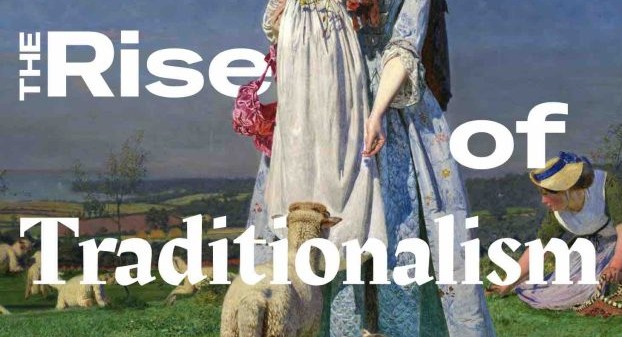Did your last campaign try to target all women, 18 to 54? Then you might have missed the boat, new research from Harbinger finds.
The study, which will be unveiled next week, surveyed nearly 4,000 women (and almost 400 men as a sample) across Canada and the U.S. to better understand the life stages of the female shopper, and how she interacts with brands along her journey through adulthood.
The study finds women could be categorized in 10 separate and distinct groupings (and Harbinger president Jeff Weiss admits that’s very top level and that even more differences and segmentation possibilities exist).
Strategy got a sneak peek at the findings at a breakfast seminar yesterday morning. Here’s a snapshot of the 10 different consumer profiles. Check back on Monday as we delve into some differences between Canada and the U.S., and read up on the top brands among all women.
Young and single
Single, no kids, 17- to 24-years-old, making less than $40,000
The singleton female is typically younger, often fresh out of school. At this stage in life, she’s often focused on personal development and spending time with friends, spending funds on beauty, fashion, sports and travel.
On average, the singleton is 15% more likely to want self-confidence than her other peers, and she aspires to be someone who is attractive, admired and creative. She tends to spend more time than any other women on social networks (2.5 hours per week more than other women, on average) or socializing with friends (2.2 hours per week more than other women), and tends to seek brands that make her feel good about herself or are recommended by peers. She is 6% more likely to be loyal to tech brands than any other women.
Independent
Single, no kids, 25- to 44-years-old, with 70% making less than $40,000 and 30% making more than $60,000
While still single, the study pulls out slightly more mature women who are shifting into their careers. Being fulfilled is the primary aspiration for the independent young woman. She aspires to be secure, prosperous and empowered, while advancing her career is her main priority (over-indexing 29% compared to average). Travel is her main point of interest, followed by technology, beauty and fashion. Her biggest brand influencer is her friends, the study finds.
Dual income no kids
Married/common law, no kids, between 18- to 44-years-old, with the majority making more than $60,000
As you might expect, romantic relationships become more important for coupled women. Being fun, loved, secure and selfless become more important aspirations for women in this life stage, and these ladies are most likely to own a pet (fittingly, this is the only brand category in which they consider themselves loyal). Like her Independent counterpart, travel is still an important activity (with a coupled woman 5% more likely to be interest in travel than the average).
Her time is typically spent on chores (1.6 hours per week more than the average woman) and meal preparation (more than 1.4 hours per week than average), and her TV watching habits have dropped significantly (watching 1.3 hours less TV a week than her peers).
Single moms
Single, one to two kids, 18- to 54-years-old, with the average making more than $60,000
The single mother is the provider, who considers her career to be the most important priority (over-indexing by 20% compared to other women, the highest among mothers), with finance and money being a big secondary concern. She tends to worry most about her children’s academic achievement, but feels less secure and self-assured than other moms and coupled women with no children. She is most interested in beauty and fashion (again, the highest among mothers), and tends to be most loyal to alcohol, cosmetic and personal care brands.
Full-time mom
Coupled, two kids, between 18- and 54-years-old
Relationships are the most important factor for full-time mothers, who aspire to be nurturing, forgiving and loved. They are least likely to value fulfillment, the study finds – and consider romantic relationships a top priority (indexing 24% more than average). Family, home and food make up full-time mom’s primary interests, while brand loyalty is often driven by what makes the family happy.
Dual-income moms
Coupled, two kids, between 18 and 54, making less than $60,000
Like their full-time mom counterpart, dual-income mothers tend to name relationships as a core value over other values. She wants her children to have high self-esteem and aspires to be nurturing. Romantic relationships and finances and money are a working mom’s top priority, while family and home are her top interests. She’s less likely to spend time on sports and fitness than her mom peers (0.5 fewer hours a week), and spends two hours less than all women online. Like full-time mom, her loyalty is driven by brands that make her family happy.
High-income professional moms
Coupled, with two kids, is between 18 and 54, making more than $40,000
Fulfillment is the high-income professional mom’s goal, and she’s most likely to be concerned about the well-being of her parents. She aspires to be someone who is nurturing, ethical, admired and powerful, and tends to have a wider breadth of priorities than her other mom peers, including family, travel, career and personal appearance.
When it comes to her kids, the study finds that high-income professional moms are most likely worried about their children’s popularity and athletic achievements, and sports and recreation take up the bulk of her interest.
Solo zoomer
Divorced/single, more than half have kids, between 45- and 64-years-old, making more than $40,000
Health and wellness is a top value for solo zoomers, with the majority aspiring to be peaceful and competent. If she has children, she is most likely to be worried about her kids’ employment and independence, and her top priority is health and fitness. She’s most interested in finance and investment and current events, and is the least likely woman to be interested in food. She spends more time than her peers watching TV (3.1 hours more than average), but spends less time on social networks (3.1 hours less than average). She’s also the least brand loyal woman on the list, and tends to care most about brands that support causes.
Coupled zoomer
Coupled, less than 33% have children over 21, are between 45- and 64-years-old, with the majority making more than $40,000
Health and wellness is the biggest value for coupled zoomer, followed by helping others and relationships. She aspires to be forgiving, honest, charitable and spiritual. Religion and spirituality are her top priority (over-indexing by 10% compared to her peers), followed by health and fitness. Home, family and health and wellness are key interests, and she tends to be most loyal to brands that make her family happy, the study finds. She’s most loyal to the health and pharma sector, followed by financial services, automotive and travel, and is often most influenced by experts.
Golden girl
Half are married, with 4.6 grandchildren, older than 65, with the majority retired
For the last segment, women in the Golden girl bucket are most likely to value health and wellness and helping others. Friends become a top priority for these women, and current events become much more important to their interests.
She’s most loyal to pharma and health, followed by financial services, automotive and food products. She is least likely to be swayed by outside influences when it comes to her brand choices.
Check back on Monday for more findings from the upcoming Harbinger study, including top brands for women and the differences between Canada and the U.S.
Image via Shutterstock
























